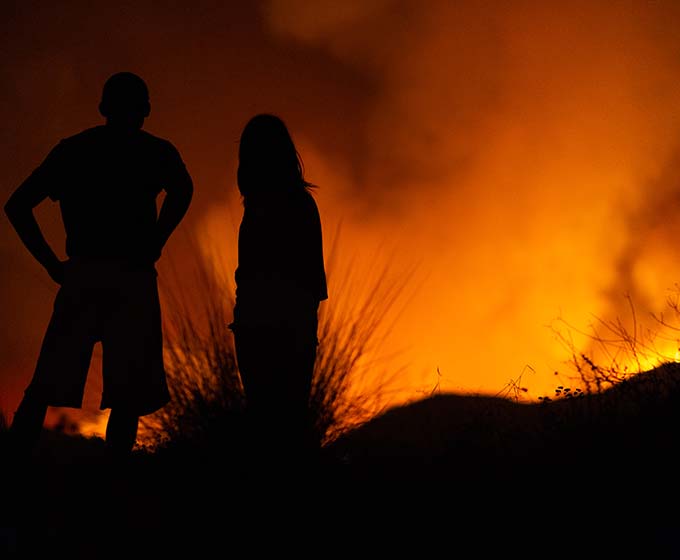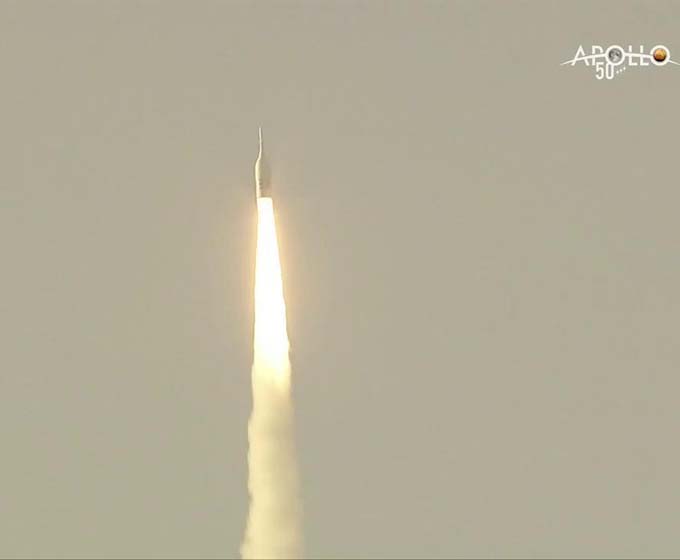
(July 31, 2019) – UTSA, a public university that is nationally recognized for research excellence, will receive $3 million dollars from NASA to develop a new interdisciplinary Center for Advanced Measurements in Extreme Environments (CAMEE).
Climate change has created extreme environmental conditions such as ocean and polar warming, and sea ice reduction. Severe weather including stronger hurricanes, sweeping forest fires, destructive tornadoes, heat waves and droughts are now more common place. Recently, soaring temperature advisories were in effect for nearly 200 million people in some of the most densely populated parts of the country, including many areas not familiar with extreme heat.
To investigate these extreme conditions, NASA and UTSA will collaborate to push the boundaries of current measurement and modeling technology by conducting research in harsh and extreme environments. They will also study the challenging conditions produced when travelling at hypersonic speeds.
“It’s urgent that measurement technologies be developed for these challenging settings to understand the physical nature of these extreme environments, and to improve our ability to predict their behavior through simulations,” said Hongjie Xie, professor and interim chair in the UTSA Department of Geological Sciences. Xie, a remote sensing scientist, leads a team of five UTSA professors who will lend expertise to CAMEE.
The other four team members include Christopher Combs, a Dee Howard Endowed assistant professor in the Department of Mechanical Engineering, who will investigate how the extreme hypersonic flow conditions experienced during atmospheric reentry will impact the design of NASA flight vehicles. Associate Professor and Associate Fellow in the American Institute of Aeronautics and Astraunatics, Kiran Bhaganagar, will provide expertise on fluid dynamics, turbulence and other computational models. The team is completed by sea ice specialist Stephen Ackley and oceanographer Alberto Mestas-Nunez, who was one of the developers of ArcCI—an open source web-based dashboard to track sea ice changes in the Arctic Ocean. As it evolves, CAMEE will also welcome UTSA collaborators from other academic disciplines.
“What we have in common are harsh environments where all these measurements are made, but it’s really hard to make a measurement because the conditions are so extreme,” said Combs. “Whether it’s hypersonics, where everything is incredibly hot and you have plasma and disassociated air, or the polar ice caps, where everything is frozen and you have to do things remotely, we have similar challenges.”
CAMEE’s research focus areas will include:
“We are measuring and studying extreme conditions in the entire earth system including the atmosphere, the ocean, and sea ice. This is one novelty of this new center,” said Bhaganagar.
The UTSA center will enhance NASA’s efforts to develop a diverse workforce in earth system sciences, remote sensing technologies, computational fluid dynamics, and experimental fluid mechanics in support of NASA’s Science, Aeronautics, and Space Technology Mission Directorates. The UTSA team also anticipates training 64 highly skilled professionals in STEM disciplines to support NASA’s mission.
CAMEE participants will enroll in summer internships at three NASA centers – the Goddard Space Flight Center, Jet Propulsion Laboratory, and Langley Research Center. Hands-on workshops will be offered to K-12 teachers to further develop an interest in earth system science, measurement, and data analytics among the next generation. The center will also create several experiential learning opportunities for UTSA students, providing them with unique training to pursue new career opportunities.
UTSA will also collaborate with St. Philip’s College, one of the Alamo Colleges District, which will provide an additional pool of students from the Colleges District to help with recruitment efforts, and the Dee Howard Foundation, which will also assist with local K-12 outreach activities.

NASA demonstrates that the Orion spacecraft’s launch abort system can outrun a speeding rocket and pull astronauts to safety during an emergency during launch. The test is a milestone in the agency’s preparation for missions to Mars. UTSA new CAMEE center will be part of the nation’s effort to help with this and other NASA endeavors. Photo credit: NASA
Additionally, CAMEE will include academic partners from the University of Colorado, Boulder and University of California, Los Angeles (UCLA) who will provide expertise in atmospheric sciences to tackle large scale phenomena such as how high-velocity Santa Ana winds are generated which can lead to massive forest fires. Other research collaborations will include Southwest Research Institute, Texas Space Grant Consortium and the US National Ice Center.
“One of the end goals of the center is to add to the Nation’s research capability in earth system science research and education,” said sea ice specialist Ackley.
In addition to helping solve grand challenges posed by extreme environments, the UTSA researchers believe that advanced measurement techniques could lead to breakthroughs in data acquisition for the similarly extreme environments experienced by extra-terrestrial surfaces during atmospheric entry of NASA’s space exploration efforts.
By leveraging recent advances in measurement technology, UTSA, NASA and the other collaborating institutional organizations will develop novel diagnostic techniques that will drive discovery and improve the ability to operate in extreme environments across a wide range of measurement scales.
Learn about the UTSA Department of Mechanical Engineering.
Learn about the UTSA Department of Geological Sciences.
Celebrate UTSA’s 50th Anniversary and share social media posts about the 50th using the hashtag #UTSA50.
Connect with UTSA online at Facebook, Twitter, YouTube, Instagram and LinkedIn.
UTSA Today is produced by University Communications and Marketing, the official news source of The University of Texas at San Antonio. Send your feedback to news@utsa.edu. Keep up-to-date on UTSA news by visiting UTSA Today. Connect with UTSA online at Facebook, Twitter, Youtube and Instagram.
Join the PEACE Center and Wellbeing Services for Denim Day, a day of learning about the importance of consent and why we wear denim on the last Wednesday of the month each April during Sexual Assault Awareness Month. Stop by our Denim Day display to take a photo in front of our Denim Wall, spin the "Is It Consent?" Wheel, and get a Concha or goodie.
Student Union Window Lounge, Main CampusLearn to use Zotero®, a citation manager that can help you store and organize citations you find during your research. Zotero can generate bibliographies in various styles, insert in-text citations and allow you to share sources with collaborators.
Virtual EventThis event will acknowledge graduating seniors from the McNair Scholars program at UTSA before inducting the new cohort of scholars into the program.
North Paseo Building (NPB 5.140), Main CampusAt this memorable celebration, UTSA graduates will be introduced one-by-one to cross the stage and accept their doctoral degrees.
Arts Building Recital Hall, Main CampusRoadrunner Walk is an event for graduating students to have a memorable walk on campus to celebrate an important milestone and their achievements. Graduates will walk along the Paseo while being celebrated by the UTSA community, friends, and family members.
Student Union Paseo, Main CampusCelebrate the accomplishments of College of Education and Human Development, College for Health, Community and Policy, College of Sciences and University College.
Alamodome, 100 Montana St.Celebrate the accomplishments of Alvarez College of Business, College of Liberal and Fine Arts and Klesse College of Engineering and Integrated Design.
Alamodome, 100 Montana St.The University of Texas at San Antonio is dedicated to the advancement of knowledge through research and discovery, teaching and learning, community engagement and public service. As an institution of access and excellence, UTSA embraces multicultural traditions and serves as a center for intellectual and creative resources as well as a catalyst for socioeconomic development and the commercialization of intellectual property - for Texas, the nation and the world.
To be a premier public research university, providing access to educational excellence and preparing citizen leaders for the global environment.
We encourage an environment of dialogue and discovery, where integrity, excellence, inclusiveness, respect, collaboration and innovation are fostered.
UTSA is a proud Hispanic Serving Institution (HSI) as designated by the U.S. Department of Education .
The University of Texas at San Antonio, a Hispanic Serving Institution situated in a global city that has been a crossroads of peoples and cultures for centuries, values diversity and inclusion in all aspects of university life. As an institution expressly founded to advance the education of Mexican Americans and other underserved communities, our university is committed to promoting access for all. UTSA, a premier public research university, fosters academic excellence through a community of dialogue, discovery and innovation that embraces the uniqueness of each voice.